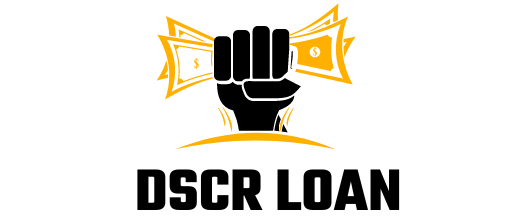Key Takeaways
- A business acquisition loan helps you buy an existing company by financing part of the purchase price.
- Common sources: SBA 7(a) loans, seller financing, bank term loans, and private investors.
- Lenders focus on cash flow, EBITDA, owner experience, and collateral prepare 3 years of financials.
- Typical down payment / buyer equity ranges from 10%–25% depending on deal risk and loan type.
- Use creative mixes (SBA + seller note + investor equity) to reduce upfront cash needs and close deals faster.
Introduction
A business acquisition loan is the most common way entrepreneurs finance the purchase of an existing company. If you want to buy a profitable small business, the right loan can close the deal while preserving working capital. This guide explains types of acquisition financing, what lenders look for, step-by-step application tips, and real-world examples so you can plan a smooth purchase.
What Is a Business Acquisition Loan?
A business acquisition loan provides the capital needed to buy all or part of an existing business. Loans can cover the purchase price, working capital, and sometimes transition costs like training or initial marketing.
Common loan structures:
- SBA 7(a):government-backed loan commonly used for acquisitions.
- Bank term loan: traditional lender financing for established businesses.
- Seller financing: the seller accepts payments over time (note or earn-out).
- Investor equity or mezzanine financing outside capital in exchange for ownership or future returns.
Types of Business Acquisition Loans
SBA 7(a) Loans
- Why choose it: Lower down payments (often 10–20%) and long repayment terms.
- Best for: Buyers of small to mid-size businesses with solid cash flow.
- Consider: SBA paperwork and lender experience matter work with an SBA-savvy bank or broker.
Bank Term Loans
- Why choose it: Faster closings and flexible structuring for strong borrowers.
- Best for: Buyers with strong credit, collateral, and immediate cash flow.
- Consider: Banks may require larger down payments and personal guarantees.
Seller Financing
- Why choose it: Reduces buyers’ immediate cash needs; shows seller confidence.
- Best for: Negotiated deals where the seller trusts the buyer and wants steady income.
- Consider: Contracts must be clear on interest, payment schedule, and default terms.
Private Equity / Investor Capital
- Why choose it: Brings growth capital and expertise; less initial cash required.
- Best for: Larger or high-growth businesses where investors see upside.
- Consider: You’ll trade equity or control for funding and align incentives early.
What Lenders Look For When Approving a Business Acquisition Loan
Lenders evaluate the whole deal: the business, the buyer, and the transaction structure.
Critical lender checks:
- Cash flow & EBITDA: Lenders usually want debt service coverage (DSCR) ≥1.2.
- Historical financials: 2–3 years of tax returns and P&L statements.
- Buyer experience: Prior industry or management experience reduces perceived risk.
- Collateral: Equipment, real estate, or accounts receivable can back loans.
- Purchase price rationale: A credible valuation and seller motive help approvals.
- Down payment / buyer equity: More buyer skin in the game → easier approval and better terms.
How Much Down Payment Is Typical?
Down payment depends on the loan type and deal risk:
- SBA 7(a): Typically 10–20% for acquisitions.
- Bank loans: Often 20–25% for riskier sectors or weaker buyer profiles.
- Seller financing: Can reduce down payment needs (seller may accept 10% + note).
Tip: Prepare at least 10–20% of the purchase price in liquid funds or verifiable assets to show lenders you’re committed.
Smart Funding Mixes That Work
Combining sources often wins deals. Examples of practical mixes:
- SBA 7(a) + Seller Note: SBA finances 70–80%, seller carries 10–15%, buyer equity 10–15%.
- Bank Loan + Investor Equity: Bank covers senior debt; investor provides mezzanine financing.
- Personal Equity + Seller Financing: Buyer invests cash; seller finances remainder to bridge gaps.
This blended approach reduces cash strain while keeping sellers aligned with a successful transition.
Application Checklist Documents Lenders Want
Prepare these items before you apply to speed approvals:
- 2–3 years personal & business tax returns.
- Business P&Ls and balance sheets (past 2–3 years).
- Purchase agreement or letter of intent (LOI).
- Personal resume and industry experience overview.
- Financial projections (projected cash flow & repayment plan).
- List of collateral with valuations.
- Copy of seller’s financials (if available) and EBITDA reconciliation.
Having this organized packet makes you appear professional and reduces lender friction.
Real-World Example How a Small Deal Closed
Case study Midtown Café Acquisition
- Purchase price: $350,000
- Seller financing: $50,000 (note, 5-year term)
- SBA 7(a) loan: $245,000 (70% of price)
- Buyer equity/down payment: $55,000 (15.7%)
Why it worked:
- The café had stable 3-year cash flow and a loyal local customer base.
- Buyer had 7 years of restaurant management experience.
- Seller agreed to a partial note to smooth the transition and demonstrate confidence.
- Lender approved after verifying P&L and projected DSCR >1.3.
This blend minimized buyer cash outlay and kept sellers invested, creating a win-win close.
Negotiation Tips to Improve Approval Odds
- Show realistic projections: Lenders value conservative, defensible forecasts.
- Negotiate seller carry: A seller note reduces your upfront capital requirement.
- Offer personal guarantees selectively: Demonstrates commitment, but discusses limits.
- Use a professional valuation: Independent appraisals strengthen your price case.
- Work with an experienced broker or lender: They streamline SBA documents and speed approvals.
Conclusion
A business acquisition loan is a practical, widely used tool to buy an existing company and it’s very achievable with the right preparation. Lenders want clear evidence of past performance, realistic projections, and buyer capability. By assembling strong financials, negotiating creative funding mixes (SBA + seller note + investor), and working with experienced lenders or brokers, you can close deals while protecting cash flow and minimizing risk.
Start by:
- Gathering 2–3 years of financials.
- Securing a seasoned lender or broker familiar with acquisitions.
- Preparing a realistic business plan and valuation to present to sellers and lenders.
Need help structuring your financing mix or reviewing lender offers? Reach out to a trusted small business lender or your financial advisor to draft a deal-ready package.
FAQs
How long does it take to get a business acquisition loan?
Typical timelines: 30–90 days. SBA loans tend to take longer (45–90 days) because of additional documentation.
Can startups get acquisition loans?
Buying an established business is not a startup purchase lenders favor established revenue. However, first-time buyers must show strong experience or bring a partner with industry expertise.
Will I need a personal guarantee?
Most lenders require personal guarantees from owners with significant equity. Expect personal liability unless you negotiate alternatives.
What if the seller won’t finance any part?
If seller carry isn’t available, consider investor equity, higher buyer down payment, or a bridge loan to make the offer competitive.
Are acquisition loans tax-deductible?
Interest on business acquisition loans is typically deductible as a business expense consult your accountant for specifics.

Introducing Emily Parker, a seasoned professional with over 5 years of expertise in DSCR loans. With her extensive knowledge and experience in the field, Varsha has consistently demonstrated a deep understanding of DSCR loan intricacies and a proven track record of delivering successful outcomes for her clients.

